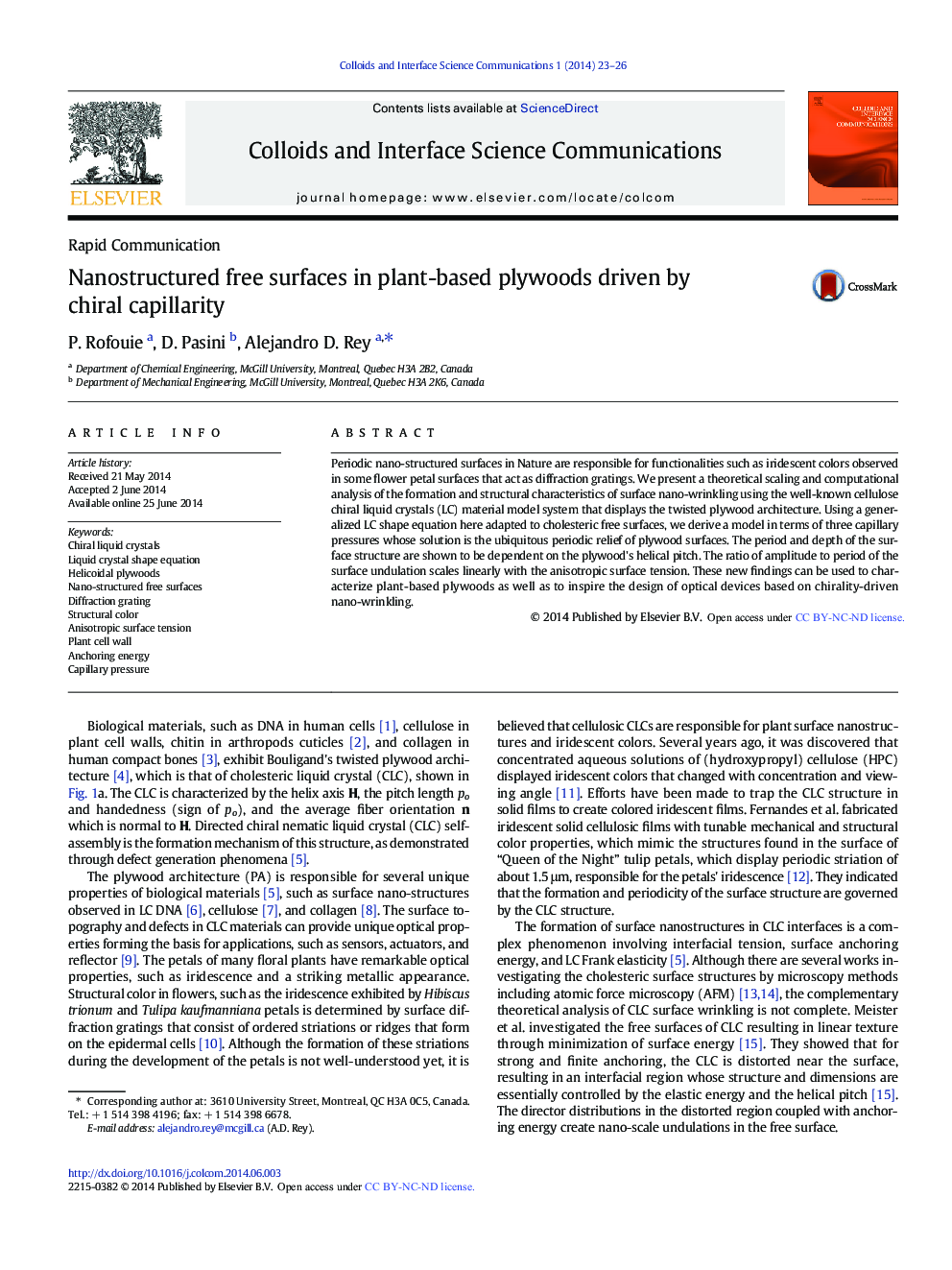| کد مقاله | کد نشریه | سال انتشار | مقاله انگلیسی | نسخه تمام متن |
|---|---|---|---|---|
| 591419 | 1453669 | 2014 | 4 صفحه PDF | دانلود رایگان |
Periodic nano-structured surfaces in Nature are responsible for functionalities such as iridescent colors observed in some flower petal surfaces that act as diffraction gratings. We present a theoretical scaling and computational analysis of the formation and structural characteristics of surface nano-wrinkling using the well-known cellulose chiral liquid crystals (LC) material model system that displays the twisted plywood architecture. Using a generalized LC shape equation here adapted to cholesteric free surfaces, we derive a model in terms of three capillary pressures whose solution is the ubiquitous periodic relief of plywood surfaces. The period and depth of the surface structure are shown to be dependent on the plywood's helical pitch. The ratio of amplitude to period of the surface undulation scales linearly with the anisotropic surface tension. These new findings can be used to characterize plant-based plywoods as well as to inspire the design of optical devices based on chirality-driven nano-wrinkling.
Figure optionsDownload as PowerPoint slide
Journal: Colloids and Interface Science Communications - Volume 1, August 2014, Pages 23–26
